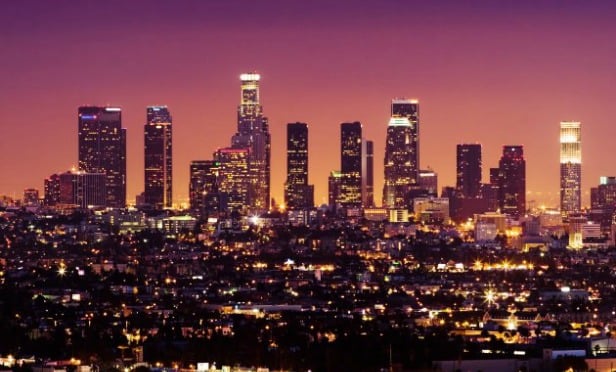
Los Angeles submarkets are among the most impacted by extreme gentrification in the country, according to new research from Yardi's Rent Café. The research company surveyed 11,000 zip codes across the US, finding that Los Angeles' 90014 has been most affected by gentrification trends. The Downtown submarket has seen a 707% increase in property values and a 95% increase in average household income; however, a majority of residents in the submarket live below the poverty line. The neighboring 90013 also made the list as the 12th most impacted zip code with a 133% increase in property values and a 77% increase in household income. Like 90014, the submarket also has a median household income that falls below the poverty line. The list of 20 zip codes included only three West Coast markets, two of which are in Los Angeles. We sat down with Balazs Szekely with Yardi Rent Café for an exclusive interview about the gentrification in Los Angeles and how it is impacting the market.
GlobeSt.com: What does it say about Los Angeles that the city has two cases of extreme gentrification on your list, and two of the three West Coast zip codes?
Balazs Szekely: The extreme gentrification of DTLA speaks mostly of the past of a decentralized city, and gives a hint to what its future might hold. Skid Row's ghost-town character is slowly transforming and we are now witnessing the process of the middle-class rediscovering the city center. The fact that only three zip codes made our list from the West Coast, actually says more about the rest of the country, particularly the East Coast, where there have been more of these very spectacular cases.
GlobeSt.com: L.A. claimed the top spot with 90014. Why has this specific pocket of L.A. seen such significant increases in property values? What is driving this change?
Szekely: One of the factors that made such a large proportional change possible is that the average home value was very low to begin with, the lowest in any L.A. zip code at that time. As the city center became more and more desirable, developers have been responding to the demand, and luxury residences as well as a new range of retail options have become available since the turn of the century. But the area—in our case outlined by zip code limits—also includes parts of more dynamically progressing districts, and presents a cross-section of wildly different income levels and property values, which has a considerable influence on the numbers.
GlobeSt.com: How have the increased property values impacted the market?
Szekely: The entire city market has been impacted by the property value increases. Los Angeles is now home to some of the most expensive zip codes in the country, and it's also an expensive city for renters. According to the latest studies, rents have increased by 20.9% in the past 3 years. That's about $400 more in rent per month.
GlobeSt.com: Gentrification obviously creates hardship for low-income residents. What are the ways to balance gentrification while encouraging growth?
Szekely: New developments bring more jobs that theoretically help fight poverty, but if this process happens too fast, the low-income population is displaced before they could start to benefit from the changes. Affordable housing options help level the playing field to a certain degree, but regulating condo conversions and demolitions also helps to establish a sustainable system of checks and balances.
GlobeSt.com: Does gentrification spread to surrounding submarkets as well? Is this a problem that you expect to intensify in the Los Angeles area?
Szekely: Gentrification is present in many areas of South and Southeast L.A. Although, spreading may not be the most appropriate expression to describe the process, as gentrification in general is a more localized phenomenon, only possible in distressed areas of a city by definition. As such, each individual case is unique and needs to be discussed separately. Generally, if there's much room for improvement in a location that suddenly becomes desirable, the process is likely to start and the effects depend in large part on the width of the income gap it creates. With that said, we have noticed some changes in rent trends in the surrounding markets. Cities like Monrovia, Diamond Bar or Palmdale have recorded spectacular year-over-year increases, recording more than 10% increase in rent.
GlobeSt.com: What is your outlook in 2018 for these markets?
Szekely: According to the latest multifamily outlook released by Yardi Matrix, more than 25,000 units are currently underway in the city and a further 88,000 units are in the planning and permitting stages. The report reads, “With the occupancy rate in stabilized properties at 96.4%, development will continue to remain high as housing demand can still quickly absorb new completions. Developers continue to focus on the city's downtown, where more than 6,700 units are being built. Submarkets in Hollywood also have an extensive pipeline: East Hollywood (1,433 units under construction), Hollywood Hills East (1,250), North Hollywood S (411) and West Hollywood (371). Although it has an occupancy rate of 96.3%, East Los Angeles is significantly lagging behind, with a total of only 2,259 units underway.”
© 2025 ALM Global, LLC, All Rights Reserved. Request academic re-use from www.copyright.com. All other uses, submit a request to [email protected]. For more information visit Asset & Logo Licensing.







